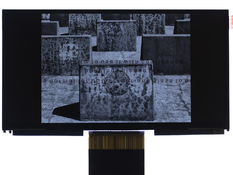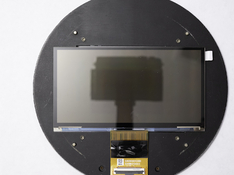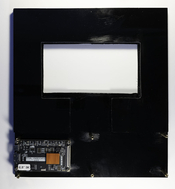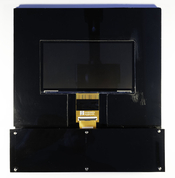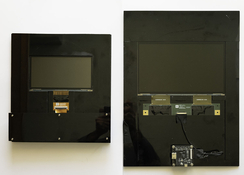Did you manage to do so by just modify the Rpi4 "config.txt" file?
Would you be kind enough to share the Raspberry configuration code/method?
Uups, sorry, I haven't noticed any notifications from here so I've missed your request.
Here is the configs I got from manufacturer:
# config rpi4_10.1 8K_mono 速猫派
#
www.nanodlp.com
#
www.sumaopai.com
disable_camera_led=1
dtparam=i2c_arm=on
#dtparam=audio=off
#dtoverlay = pi3-disable-bt
enable_uart=1
[HDMI:0]
hdmi_ignore_edid=0xa5000080
display_hdmi_rotate=0
hdmi_drive=1
hdmi_force_hotplug=1
hdmi_force_hotplug=1
hdmi_timings=2560 0 56 32 44 4320 0 25 3 6 0 0 0 25 0 221184000 0
hdmi_group=2
hdmi_mode=87
hdmi_pixel_freq_limit=500000000
hvs_priority=0x32ff
max_framebuffer_width=2560
max_framebuffer_height=4320
framebuffer_width=2560
framebuffer_height=4320
framebuffer_depth=32
framebuffer_ignore_alpha=1
config_hdmi_boost=4
gpu_mem=192
framebuffer_ignore_alpha=1
hdmi_pixel_encoding=2
disable_overscan=1
dtparam=audio=on
gpu_mem=128
dtoverlay=pi3-miniuart-bt
#CM4 WIFI天线
dtparam=ant2
force_turbo=1
enable_uart=1
dtparam=i2c_arm=on
dtoverlay=dwc2,dr_mode=host
dtoverlay=gpio-poweroff,active_low,gpiopin=23
# config rpi4_10.1 8K_mono speed cat pie
#
www.nanodlp.com
#
www.sumaopai.com
disable_camera_led = 1
dtparam=i2c_arm=on
#dtparam=audio=off
#dtoverlay = pi3-disable-bt
enable_uart = 1
[HDMI:0]
hdmi_ignore_edid = 0xa5000080
display_hdmi_rotate = 0
hdmi_drive = 1
hdmi_force_hotplug = 1
hdmi_force_hotplug = 1
hdmi_timings = 2560 0 56 32 44 4320 0 25 3 6 0 0 0 25 0 221184000 0
hdmi_group = 2
hdmi_mode = 87
William = 500000000
hvs_priority = 0x32ff
max_framebuffer_width = 2560
max_framebuffer_height = 4320
framebuffer_width = 2560
framebuffer_height = 4320
framebuffer_depth = 32
framebuffer_ignore_alpha = 1
config_hdmi_boost = 4
gpu_mem = 192
framebuffer_ignore_alpha = 1
hdmi_pixel_encoding = 2
disable_overscan = 1
dtparam=audio=on
gpu_mem = 128
dtoverlay=pi3-miniuart-bt
# CM4 WIFI antenna
dtparam=ant2
force_turbo = 1
enable_uart = 1
dtparam=i2c_arm=on
dtoverlay=dwc2,dr_mode=host
dtoverlay=gpio-poweroff,active_low,gpiopin=23
---





